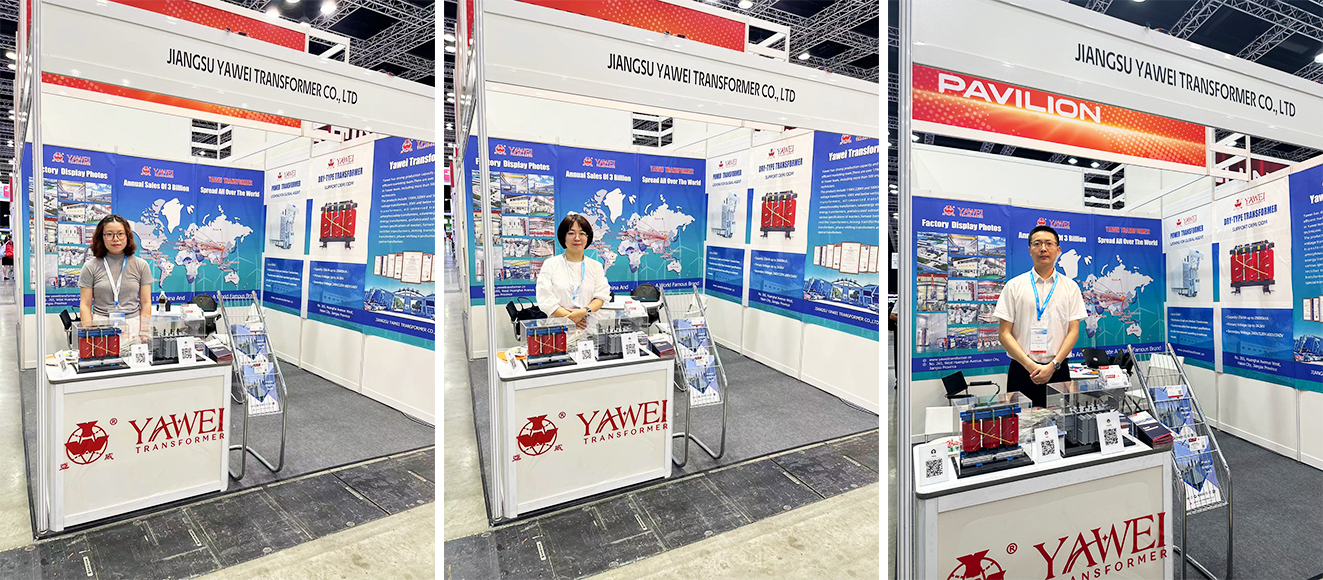- E-mail: admin@yaweitransformer.cn
- Tel: +86-18862719076
We will be waiting for you at the Malaysia International Power Energy Exhibition on June 21
Transformers can be classified according to different standards and characteristics, the following are some common classification ways:
1. Classification by use:
– Power transformer: used for voltage conversion of power system, usually large power, used in power stations, substations, etc.
– Measuring transformers: including voltage transformers and current transformers, used to measure high voltage and high current, and isolation protection.
– Special transformers: such as audio transformers, pulse transformers, mining transformers, etc., designed according to specific applications.
2. Classification by number of phases:
Single-phase transformer: A transformer containing only one set of primary and secondary windings.
Three-phase transformer: contains three sets of windings for three-phase systems to transfer large-scale power more efficiently.
3. Classification by cooling method:
Dry transformers: rely on air cooling, such as natural air cooling or forced air cooling.
Oil-immersed transformer: The use of insulating oil for cooling and insulation, and heat through the tank wall to the air.
4. Classification by winding configuration:
– Double-winding transformer: there is one primary winding and one secondary winding.
– Autotransformer: the primary and secondary windings have part of the coil shared, which can save material, but the isolation is not as good as the double-winding transformer.
5. Classification by structural form:
– Core transformer: The winding is usually wound around the column of the iron core, and the core is shaped like an “E” or “C”.
Shell type transformer: The iron core covers most of the winding, usually the winding is wound around the center column, the core shape is like an “M”.
Transformers in different applications and requirements, the above classification can have different subdivisions. For example, in special applications, the frequency characteristics of the transformer, capacity size, use environment, material type and other dimensions may also be considered.
